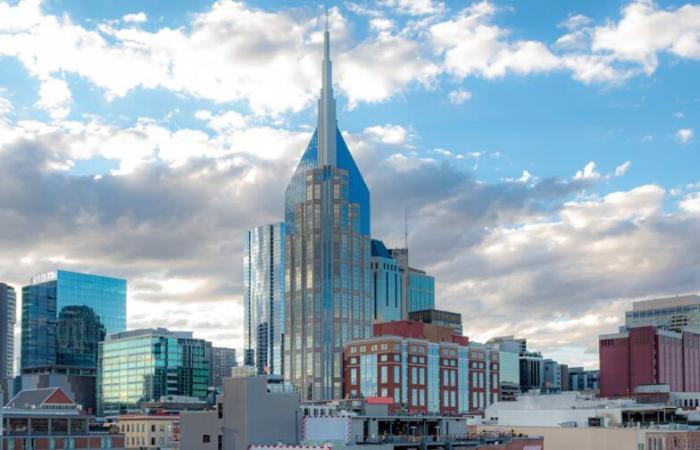
The economic geography of the United States is changing. Far from the clichés seen in Europe, growth zones are developing far from the Pacific and Atlantic coasts. Do you know Boz-Angeles or Nash-Vegas, these cities that are on the rise, without forgetting Boise and its treasure valley.
Like the rest of the Western world in particular, the United States has been hit by a crisis of inflation and purchasing power which has strongly affected the middle class. This resulted in relatively increasing social inequalities. This question weighed heavily during the presidential and representative election campaign and the results observed depend, to a large extent, on everyone's assessment of the virtues of the candidates from both camps.
If the presidential campaign pits a former president against a former vice-president, suggesting that nothing is changing in the United States, the geography of the growth of this vast country indicates that this is not the case and that many changes are at work. New Eldorados for employment, wealth and innovation have emerged in recent years and are doing as well, or even better, than the large, emblematic and well-known metropolises. The economic map of the United States is reinventing itself and is no longer limited to New York, Los Angeles, Chicago, San Francisco and Silicon Valley, but also Boston, Dallas-Fort Worth, Seattle and Pittsburgh, in terms of education, high-tech, IT, health and pharmaceuticals or aeronautics. Without forgetting the political capital, Washington.
Back to the Wild West!
Do you know “Boz Angeles” or “Nash-Vegas”? These neologisms symbolize the emergence of growth territories which will perhaps be the new Detroit, Cleveland, Flint, Akron or Buffalo, all coming from the region of the northeast of the United States formerly called the “manufacturing belt” which has since become a thirty years the “rust-belt” (“rust belt”). This shows the dizzying fall in productive activities linked to steel and the steel industry in the greater region, with a number of inhabitants which has been halved for certain large cities in just two decades, notably Cleveland and Detroit, which declared bankruptcy in 2013 with a cumulative debt of more than $18 billion!
Author provided (no reuse)
But let's return to Nashville Tennessee, now nicknamed “Nash-Vegas” in reference to the gambling capital Las Vegas (Nevada). Do you know Wichita, Kansas, nicknamed the “Air Capital”? And Charlotte in North Carolina or even Phoenix in Arizona and its impressive industrial capacity in the field of semiconductors.
The Treasure Valley
We could also linger in the “treasure valley” designating the agglomeration of Boise in the Rockies, with the strongest dynamics of the American economy over the last 5 years located in… Idaho. No, you are not dreaming! and we could add cities like Ogden and Provo in Utah! The state of Utah, which for around ten years had been ranked among the ten most dynamic states, has even occupied first place since 2016, with an unemployment rate of between 2% and 3.5%. Enough to make any European government dream! Certain sectors of activity such as health or services are seriously lacking in manpower.
These territories, almost unknown to the general public, are nevertheless riding the wave of economic and demographic growth. They constitute a new El Dorado for investors and populations looking for new spaces and living environments.
Read more: What are the images of Detroit's collapse named for?
The rush towards medium-sized cities with a pleasant living environment
As elsewhere, the Covid-19 crisis has accelerated the phenomenon. Idaho, Colorado and Montana attracted new populations seeking an excellent living environment, where real estate was initially much more affordable than on the West Coast. Cities on a human scale, with all services and close to nature, have discovered a new recipe for growth and attractiveness.
Thus, Boise in Idaho has seen the number of job offers double since 2021 and its population has increased by 24% over the last ten years, reaching nearly 250,000 inhabitants in the city and an unemployment rate of 3.3%. in the summer of 2024.
To get there, regional and local public authorities have made significant investments to raise awareness of the region. Laws have been passed relating to tax advantages and tax credits for the installation of new activities, particularly for data centers. Facebook has therefore invested in new equipment, while other large investments in semiconductors have been made over the last five years, resulting in thousands of jobs.
The Charlotte or Phoenix poles
Which city in the United States would you name in terms of financial and banking hub? Certainly not Charlotte, North Carolina. However, it is the second city behind New York in terms of banking. Bank of America has set up its “world” headquarters there and employs nearly 15,000 people, as does Wells Fargo, a Californian bank. This “Southern” city is located halfway between the “Big Apple” and Miami, has an international airport – 6e of the United States in terms of annual passenger transport. In this urban area which now has 2.2 million inhabitants, the unemployment rate is 4.9%. Nearby, Nascar racing represents a financial windfall of six billion dollars each year, and employs around 23,000 people.
In the same spirit, let us cite Phoenix (Arizona), which now has more than four million inhabitants in its metropolitan area, the local authorities having pursued a proactive and attractive industrial policy. In just a few years, Phoenix has become the new El Dorado for semiconductors, where the Taiwanese TSMC has invested forty billion dollars with 4,500 workstations. Further south in the city, the American Intel has spent twenty billion with the objective of creating 3,000 jobs. Here again, we observe that large industrial groups – including new technologies – are showing a desire to establish themselves in more central regions of the United States rather than in the major economic centers of the west and east coast. In Arizona, Colorado and Tennessee, numerous training programs have been set up to help and support companies in finding the thousands of qualified workers they need to ensure their production objectives.
Successful reconversions
We must undoubtedly put into perspective the economic decline of the large industrial and traditional region of the northeast of the United States, in particular because in Pittsburgh, Detroit and even Cleveland many head offices of international groups are still present. Furthermore, manufacturing activities are far from being obsolete and having disappeared.
Important connections and exchanges are established between these “rust-belt” states with those of the Midwest located nearby and working in the field of agri-food, agriculture and transport, requiring the provision of equipment, in gear and machines still produced in the North-East.
Besides Pittsburgh, a large urban area, the former capital of steel as it was nicknamed with nearly 90,000 people living there, which has successfully transformed itself towards life sciences and new technologies, other more modest ones in the Ohio and Indiana are seeing their image restored with public policies focused on the attractiveness and renewal of their city centers. In Evansville, for example, new residents receive a welcome allowance of a few thousand dollars as an incentive to settle in.
Already a housing crisis!
But as always happens very quickly in the United States, the economic and population growth of the last ten years in the sparsely populated territories of the west and center, such as those of Utah, Idaho, Montana or again Colorado, have already led to forms of saturation of the housing market, while real estate prices have risen very quickly… to the point that difficulties in finding housing are already appearing.
The “boomerang” effect arrived very quickly and the threat of a real estate market identical to what we observe on the Pacific coast is very real. The pressure is very strong in Bozeman in Montana (“Boz Angeles) where the proximity of the Yellowstone park has sharply increased the prices of properties that have fallen into the hands of the rich from New York or Silicon Valley. The housing and real estate crisis is a very sensitive point throughout the United States and small and medium-sized towns are not spared. This will be a theme at the heart of the campaign and the elections.
The vision of an American economy driven solely by large, world-famous metropolises is less and less founded. New polycentric growth dynamics have been taking place for almost a decade in emerging or unusually cited territories. The rise and growth of these new Eldorados shows a more complex economic geography of the United States, in which companies develop strategies for networking their activities, not only internationally, but also and above all in the heart of North American regions and territories.
How did its territories “speak” to the presidential candidates, and conversely, how did the speeches and words of the candidates “speak” to these regions and territories bringing new American growth and prosperity?





